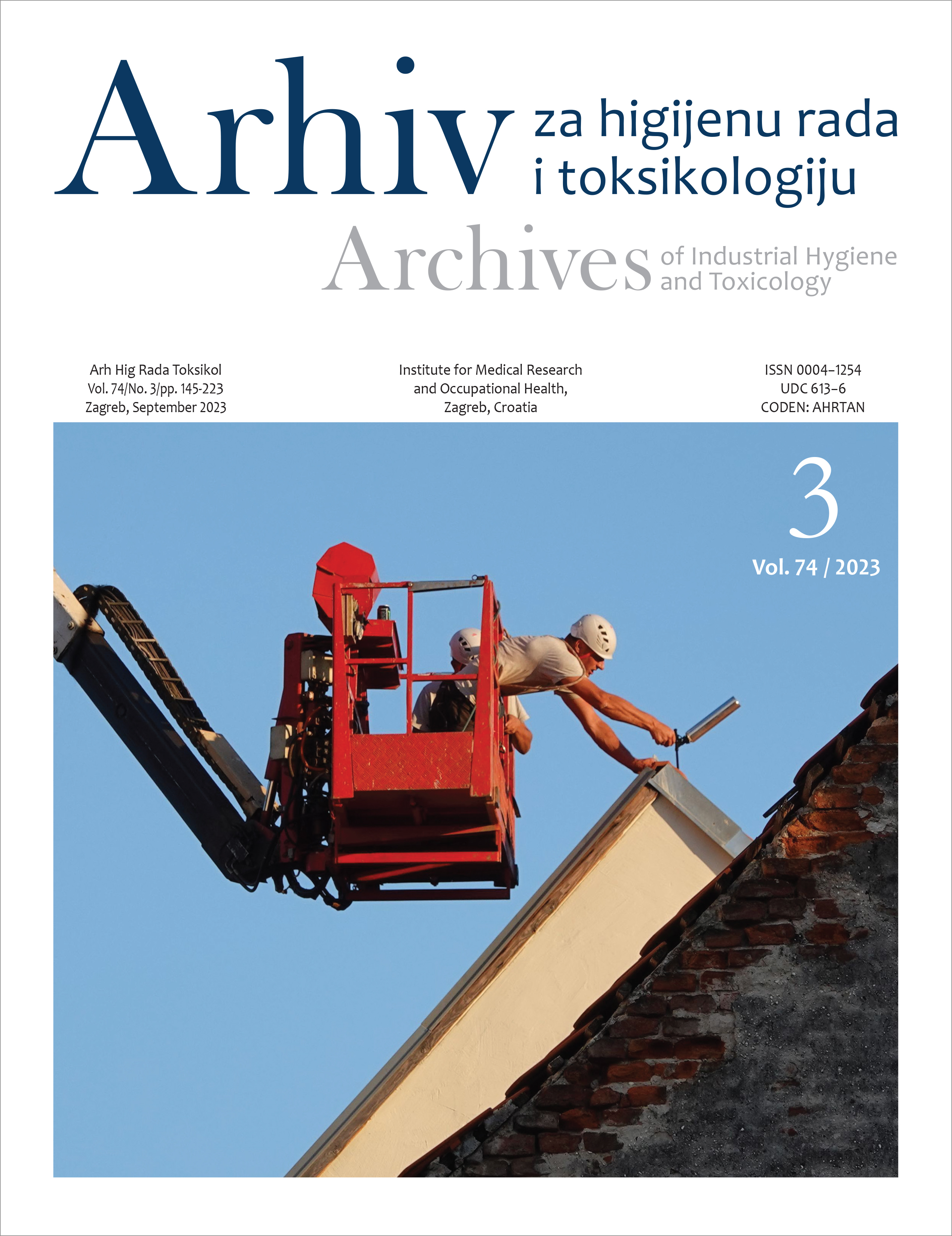Combined effects of valproate and naringin on kidney antioxidative markers and serum parameters of kidney function in C57BL6 mice
DOI:
https://doi.org/10.2478/aiht-2023-74-3764Keywords:
calcium, catalase, hyperkalaemia, malondialdehyde, oxidative stress, potassium, sodium, superoxide dismutaseAbstract
Valproate is known to disturb the kidney function, and high doses or prolonged intake may cause serum ion imbalance, kidney tubular acidosis, proteinuria, hyperuricosuria, polyuria, polydipsia, and dehydration. The aim of this in vivo study was to see whether naringin would counter the adverse effects of high-dose valproate in C57Bl/6 mice and to which extent. As expected, valproate (150 mg/kg bw a day for 10 days) caused serum hyperkalaemia, more in male than female mice. Naringin reversed (25 mg/kg bw a day for 10 days) the hyperkalaemia and activated antioxidative defence mechanisms (mainly catalase and glutathione), again more efficiently in females. In males naringin combined with valproate was not as effective and even showed some prooxidative effects.














